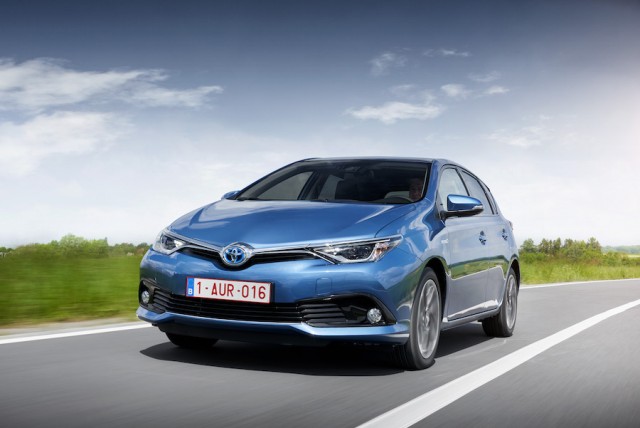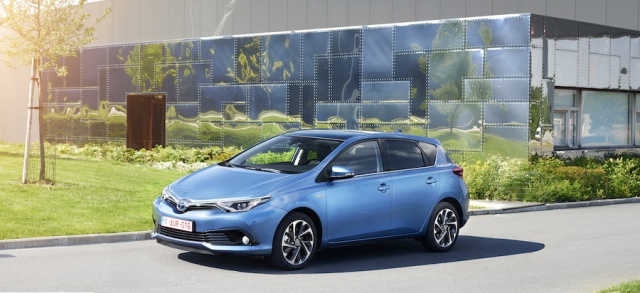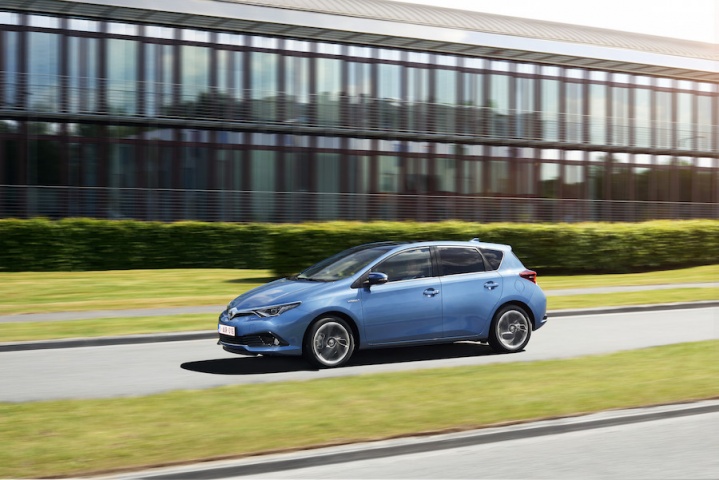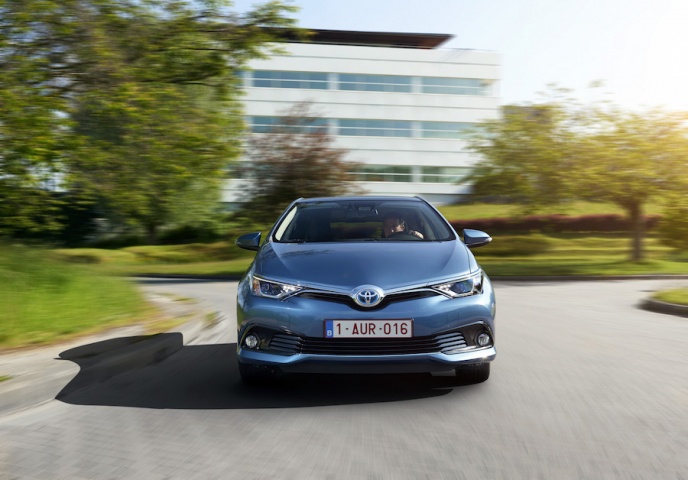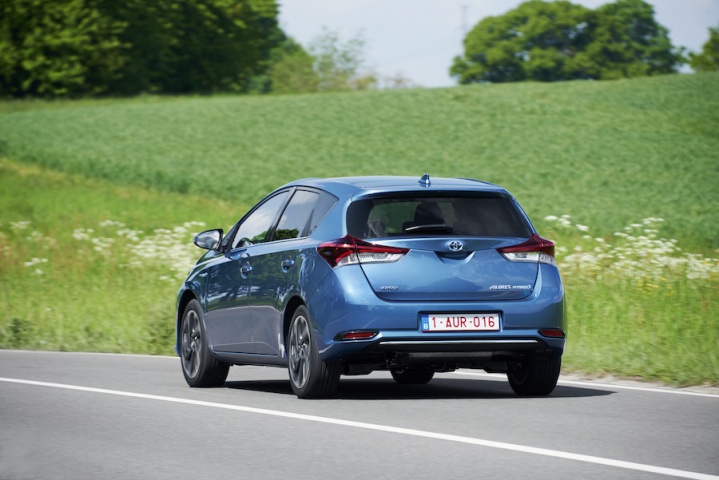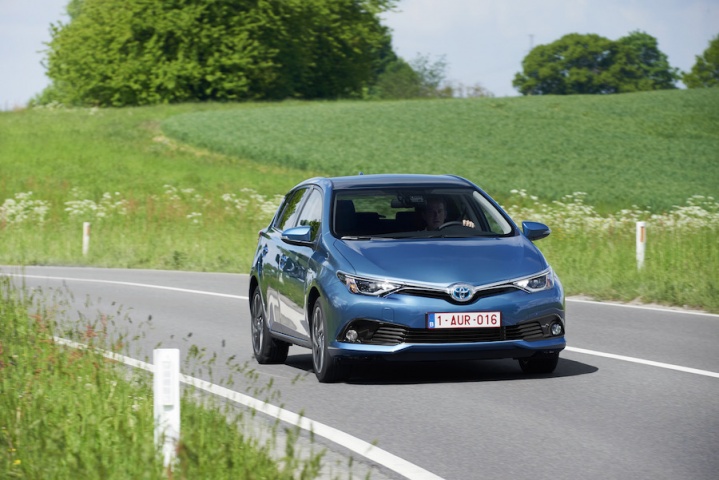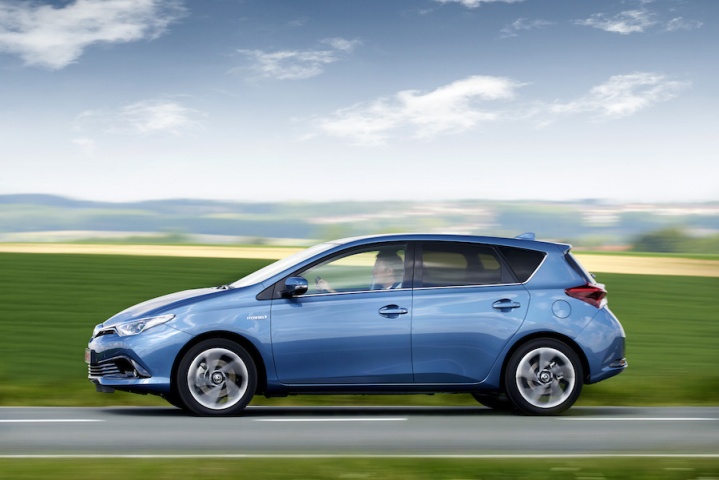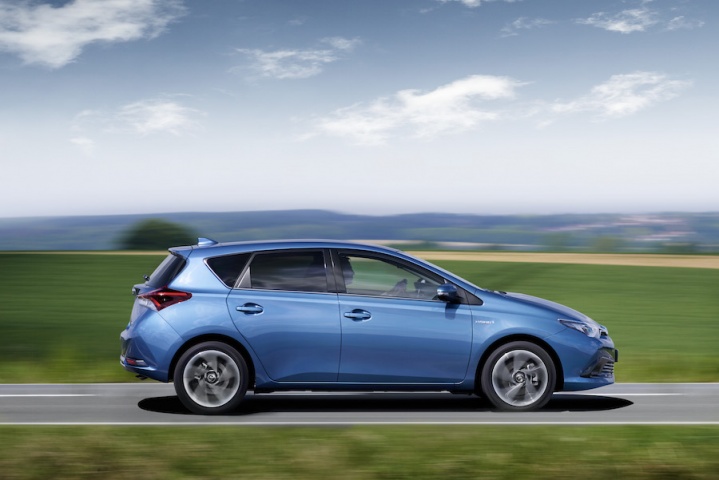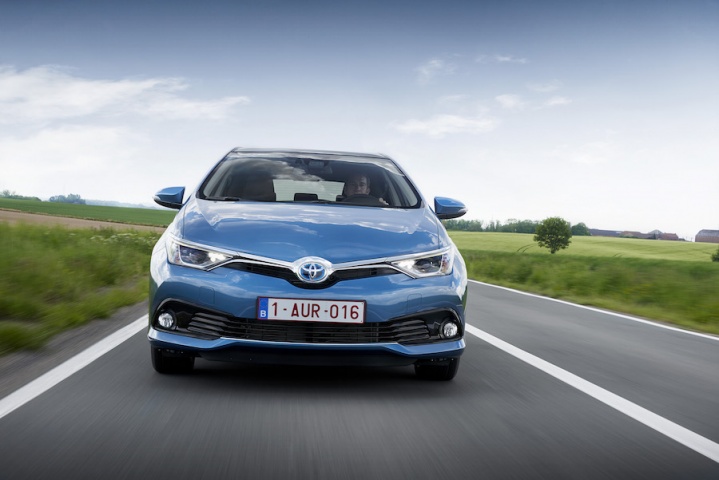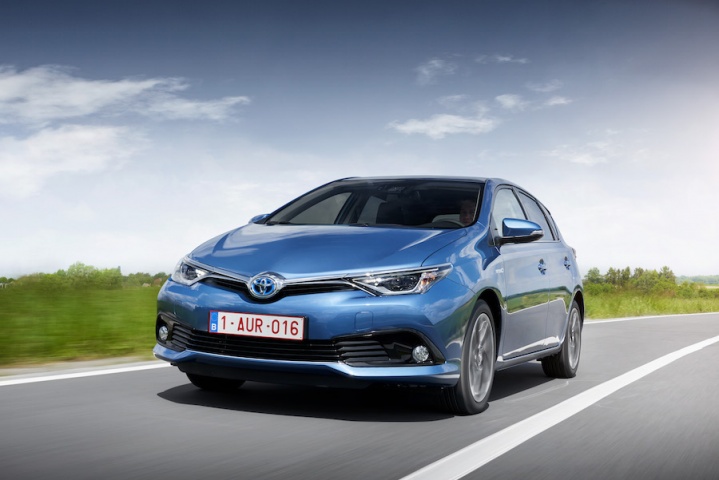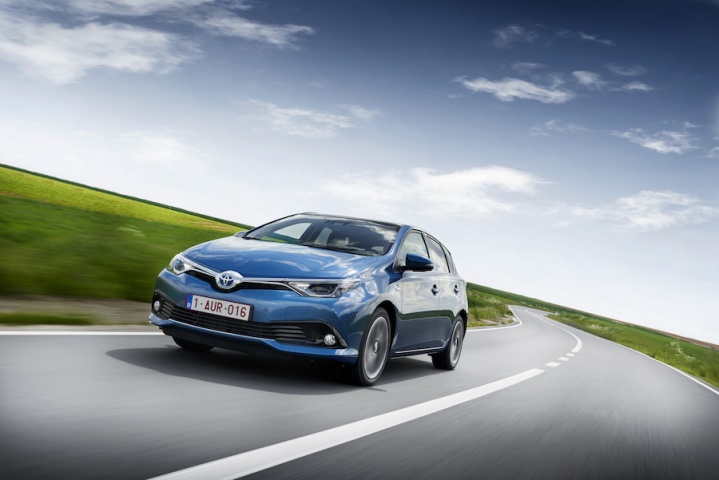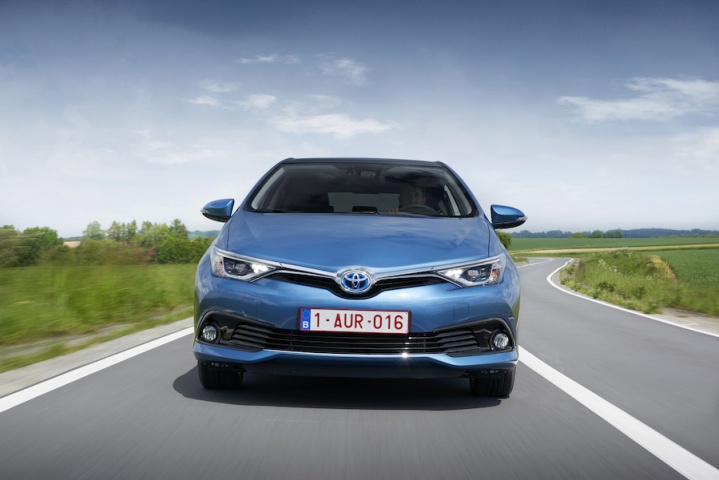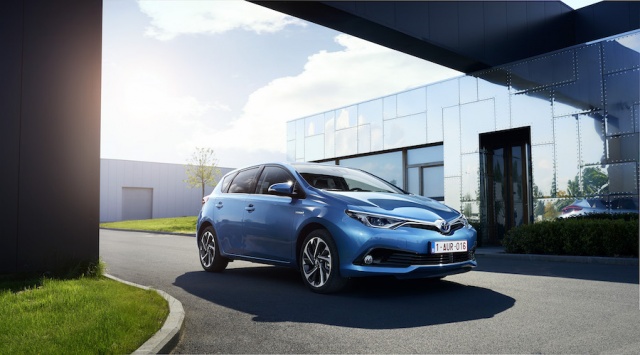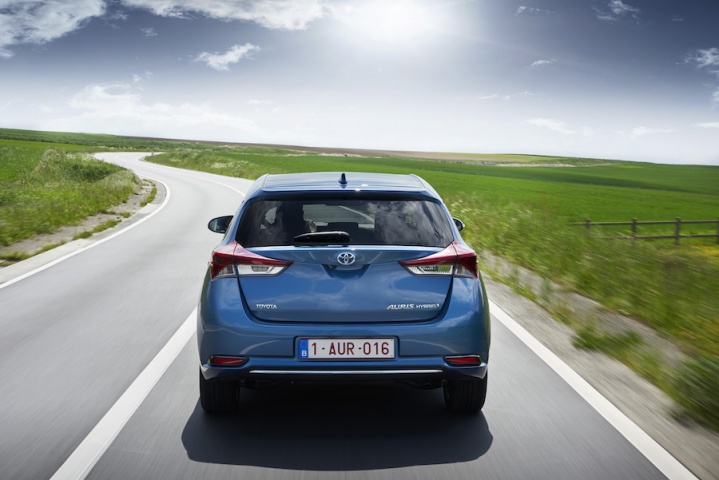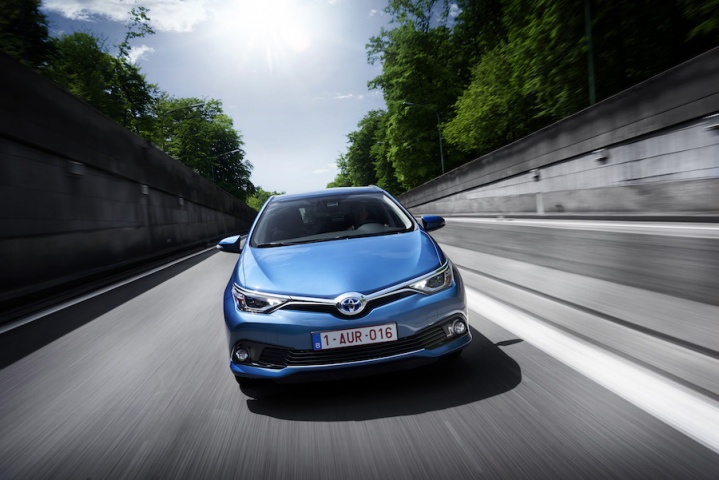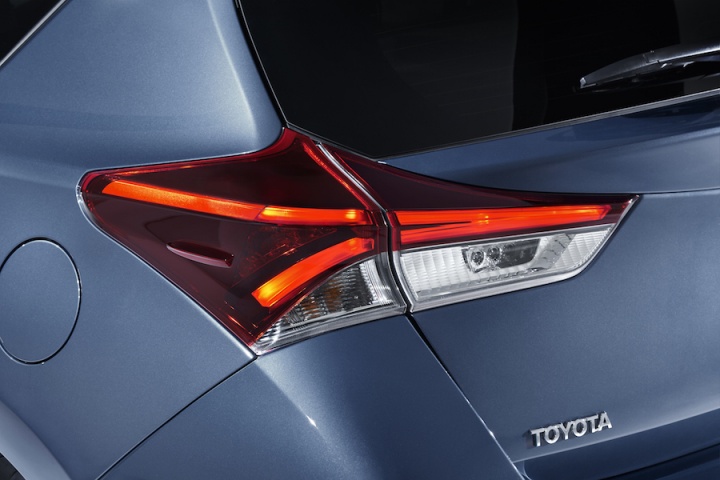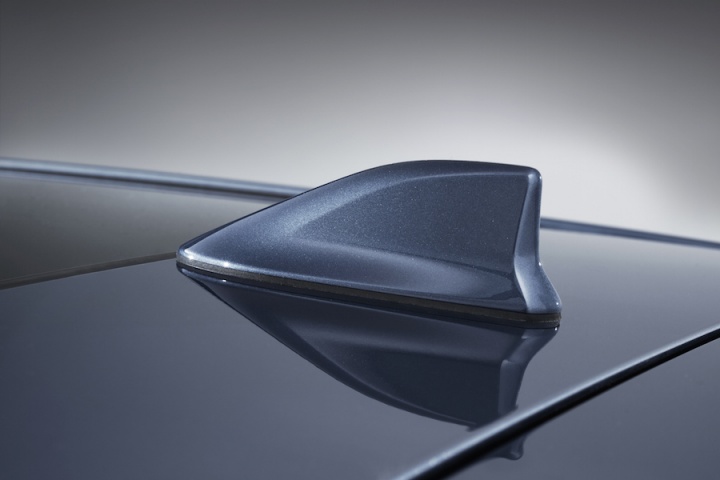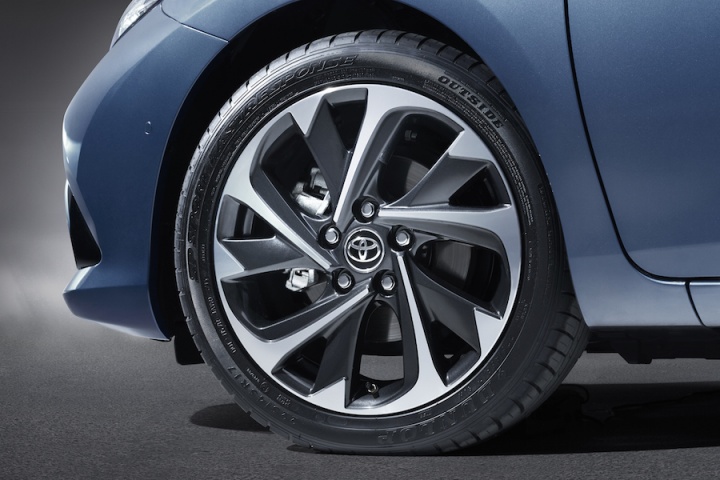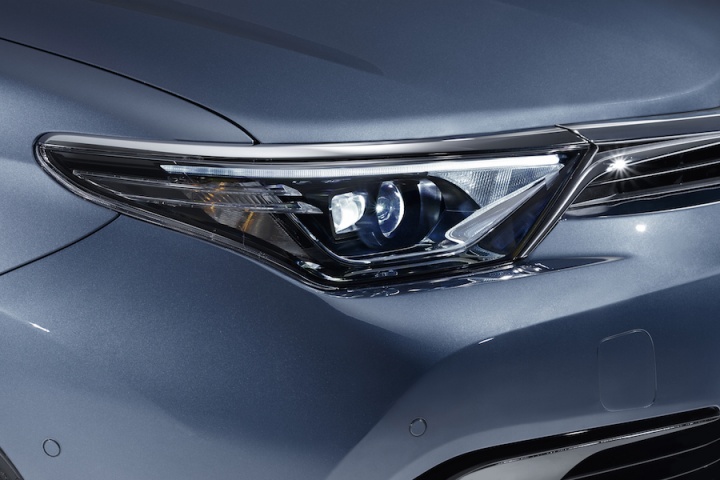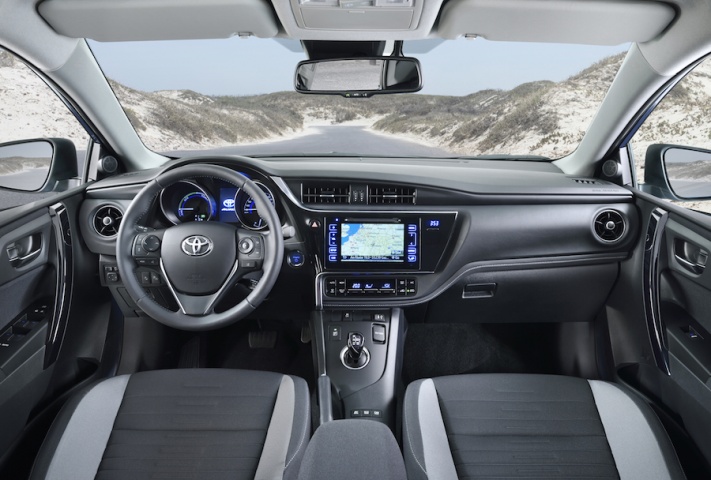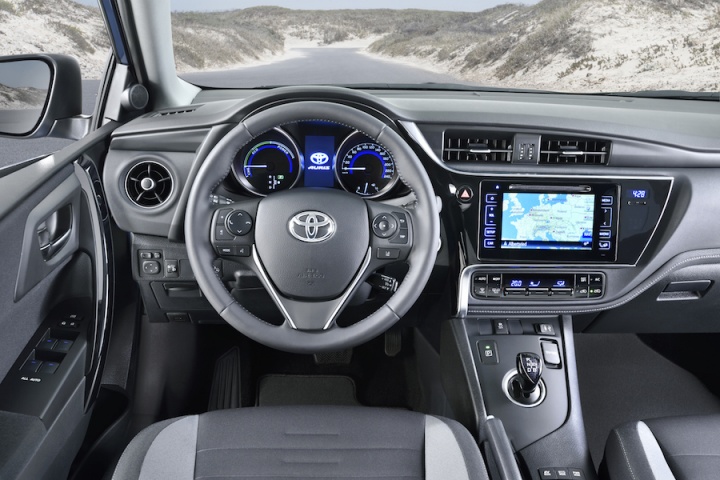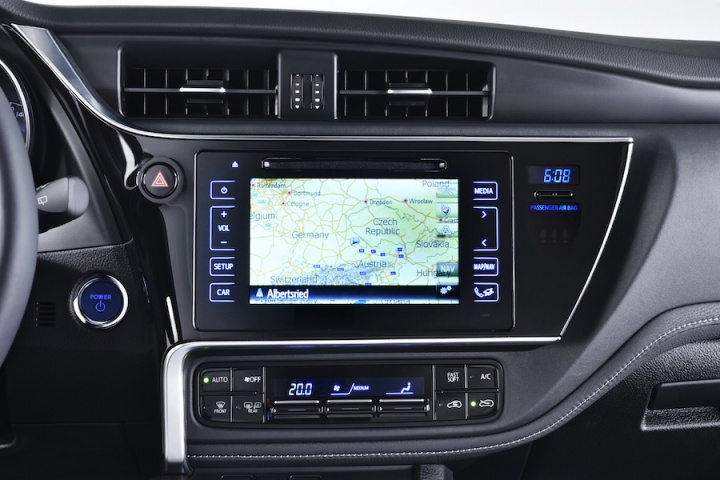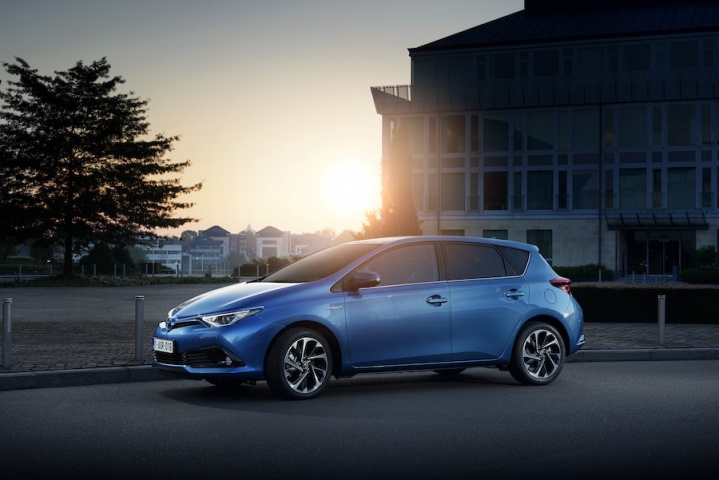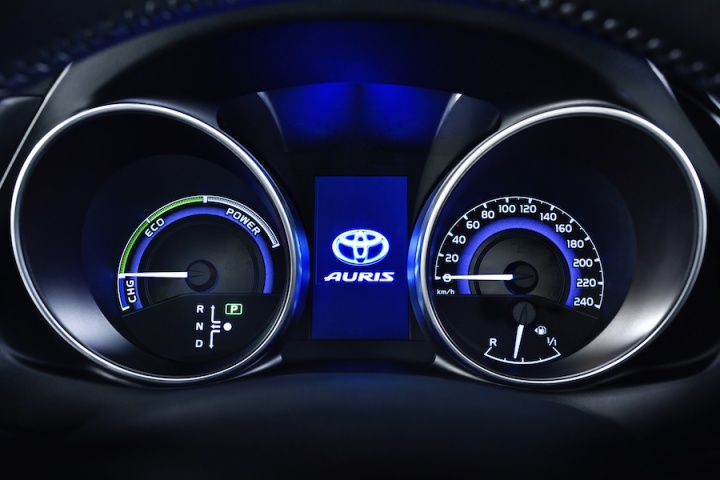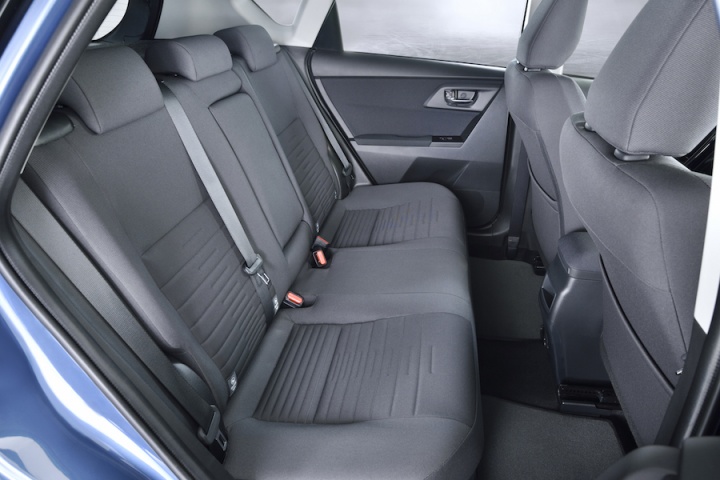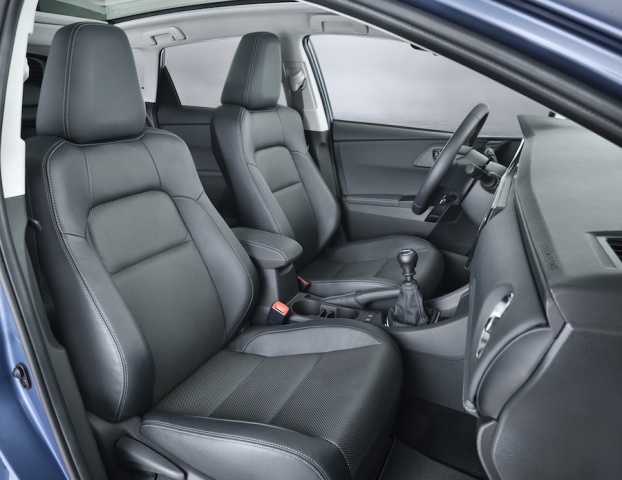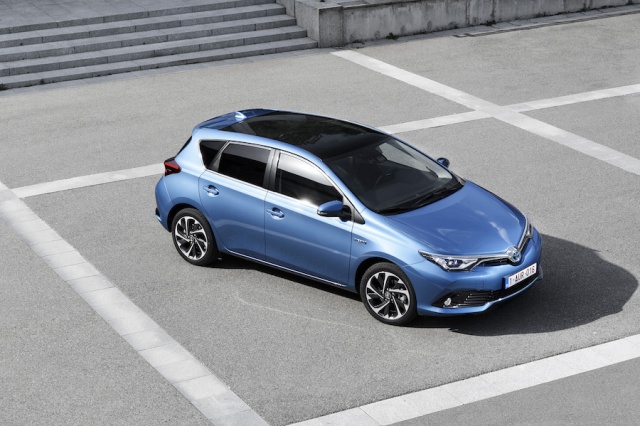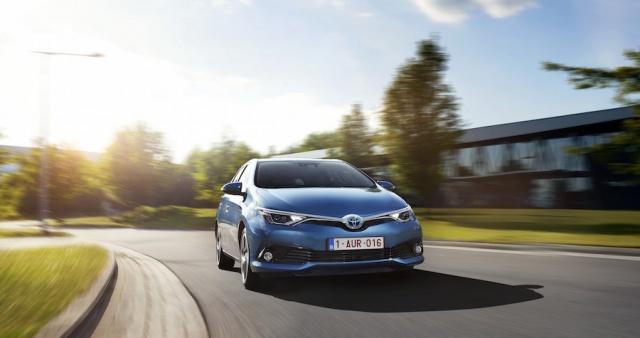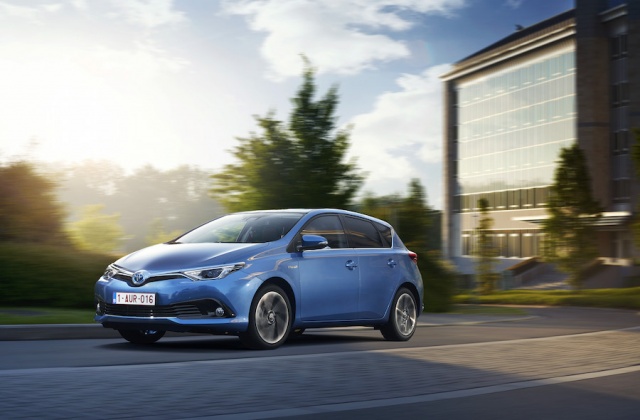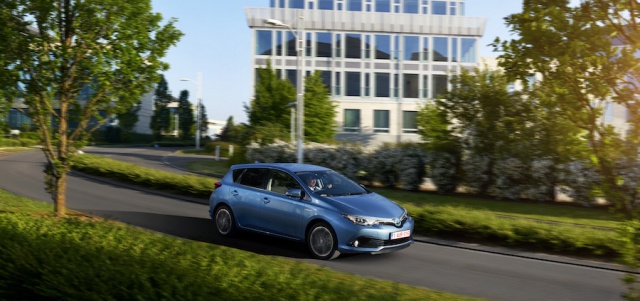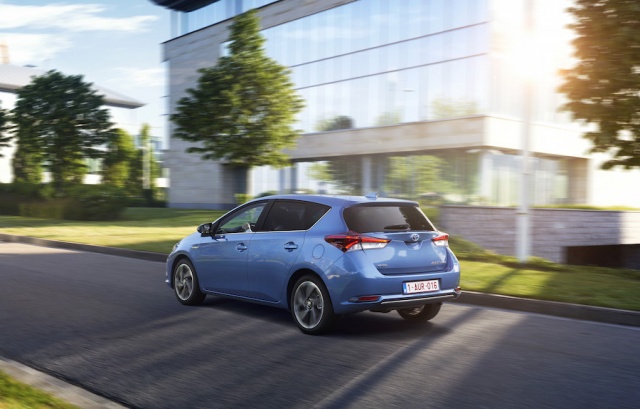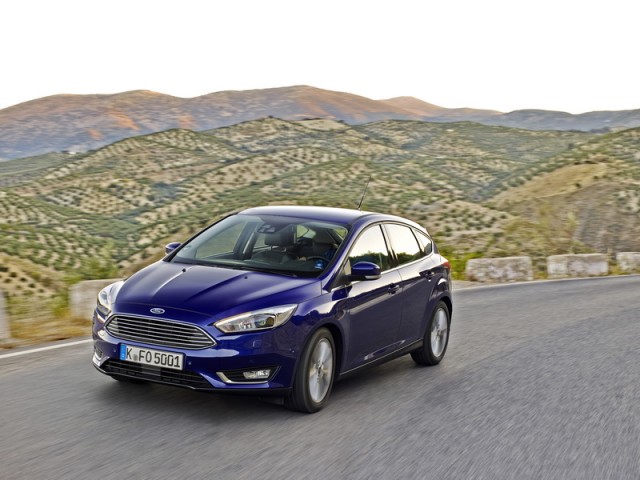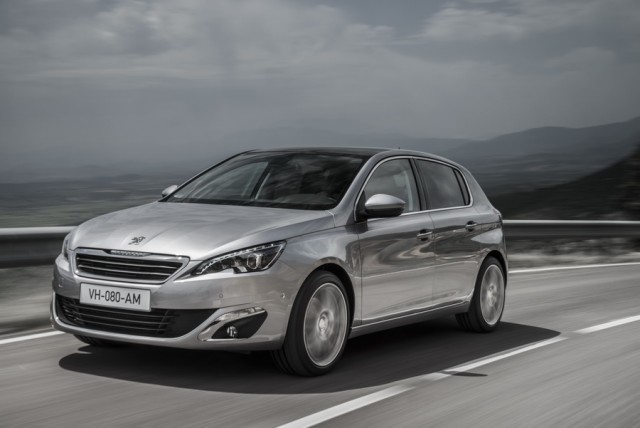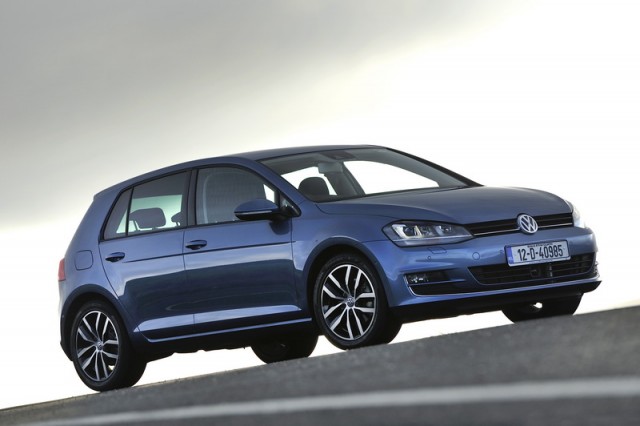Overall rating: 4/5
An update means that the Toyota Auris is now sharper looking both inside and out, running closer than ever to its mainstream European rivals. Boosting the new model is perky 1.2-litre petrol engine that delivers an improved driving experience too.
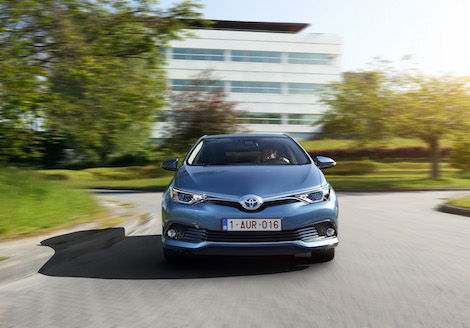
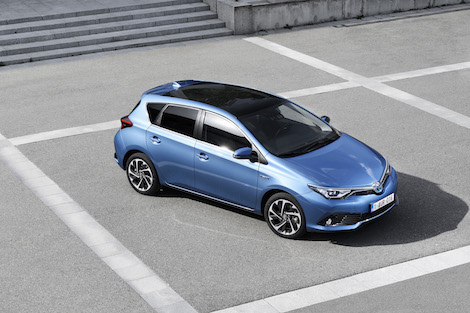
In the metal 4/5
For this new Auris the designers at Toyota let the European side of the company take the lead in shaping the car's exterior and interior, which is a very good thing. It has a much sharper appearance that moves the car on from what was a somewhat bland design previously. Like its big brother, the new Avensis, the nose of the Auris has a more prominent Toyota badge from which flows chrome trim that links it with the more assertive looking headlights. Front fog lamps have been pushed out a little bit further to the car's sides and both now form part of a single lower grille section that gives the car a much more attractive appearance. The range-topping Sol grade also benefits from tasty 17-inch alloy wheels, although they do come at a cost by driving up emissions to 125g/km, which pushes this particular model into Band B1 (€270 per annum) - whereas Aura and Luna grade models fall into Band A4 (€200 per annum).
At the back the changes are minor but on the whole contribute to a better overall look. The rear light units have been given a leaner, more defined appearance and incorporate a new LED light signature. The redesigned bumper is now deeper and the rear reflectors are now horizontal rather than vertical as previously.
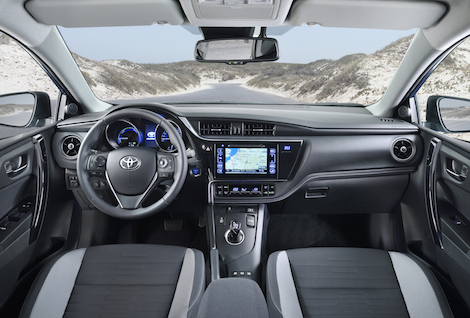
Inside, the most noticeable difference is the new Touch 2 infotainment screen, which features as standard on Luna and Sol models. This seven-inch colour touchscreen looks of much higher quality than before and is neatly located in the centre console on what appears to be a floating mount. From the passenger seat there's the impression of greater room due to how this floating unit curves away from them, while unlike many of its rivals there is also a generously sized glovebox. From the driver's seat the position feels better thanks to new seat designs that offer up improved side support. The multifunction steering wheel feels chunky and tactile while directly in front is a new 4.2-inch colour TFT screen that relays various driving and trip information, nestling between the main dashboard meters.
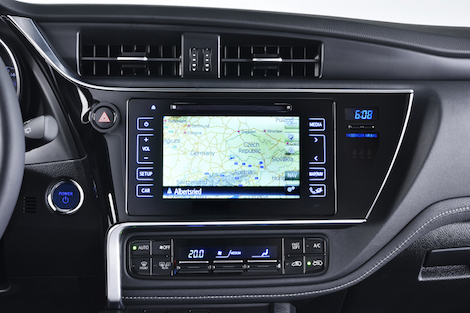
Driving it 3.5/5
Many buyers may choose the new 1.2-litre engine because of its modest fuel consumption, but the turbocharged four-cylinder unit is also reasonably perky when driven a bit more enthusiastically. It uses Toyota's VVT-iW (Variable Valve Timing - intelligent Wide) system, which gives greater flexibility, thus improving performance. It produces peak torque of 185Nm from just 1,500rpm so there's enough low down shove when moving away from the traffic lights and around town at lower speeds to suit most drivers' needs. The Auris is equipped as standard with a six-speed manual gearbox that is smooth in operation and requires little effort to change gear. When driven more economically the new engine can return an official 5.4 litres/100km, which isn't too bad.
There have been numerous revisions made to the Auris' steering and suspension in a bid to improve the overall drive quality and boost refinement; the results are obvious. Over a variety of surfaces it demonstrates a far more compliant ride and feels smoother. Through bends there is still some body roll but the car does feel surefooted even in damp conditions. Updates to the electric power steering have injected slightly more feel, but if you're after a deeply involving drive you might want to look elsewhere. That said, for its intended purpose (and buyer) it does a reasonable job, proving light enough to make tighter parking and town driving a cinch.
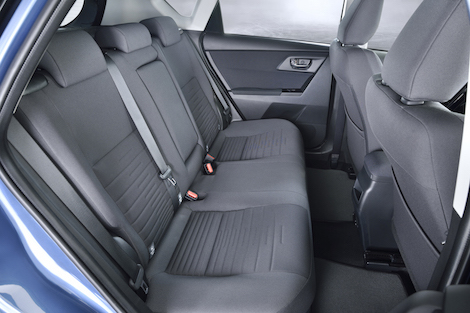
What you get for your money 4/5
As with all Toyota models there will be four trim grades to choose from, with Terra propping up the range, but that specification is only available with the older 1.33-litre Dual VVT-i engine. Pricing for the 1.2-litre starts at €23,500 in Luna grade and features chrome window surrounds, 16-inch alloy wheels, cruise control, the seven-inch Touch 2 system, reversing camera, TFT display for the dashboard and front and rear electric windows. In comparison to a similarly specified Ford Focus the Auris comes in around €1,795 cheaper.
The Sol grade driven here costs €1,000 more, but for that you get 17-inch machine faced alloy wheels, rear privacy glass, rain sensing wipers, power door mirrors, an electrically adjustable driver's seat and heated front seats. It's also a little more expensive to tax because of the larger wheels.
Toyota's full Safety Sense package, including Road Sign Assist that can detect and display the current speed limit, Lane Departure Alert and Automatic High Beam, remains an optional extra on all trim grades and costs a further €560.
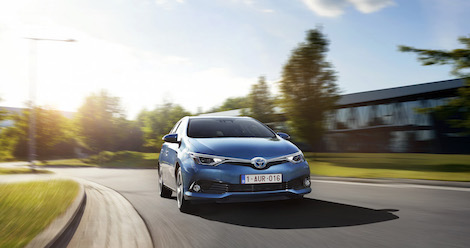
Summary
In the new Auris Toyota has made some noticeable improvements to what was previously a forgettable car. In fact it could just be the best car in the company's current line-up, exhibiting handsome looks with a more enjoyable drive. The price walks between trim grades make sense and should be competitive enough to entice buyers to choose more well-equipped models as doing so in this case makes for a much nicer car to drive.

